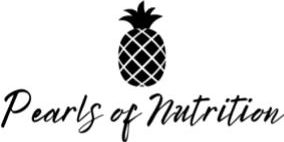
It happened – the results of your bloodwork came back and you’ve been told you have high cholesterol. While your first inclination may be to lower or eliminate foods in the diet that contain cholesterol – recent research shows this may have minimal to no impact on actually lowering your cholesterol levels. Before we look at what can help to lower cholesterol, let’s take a quick moment to review what cholesterol is.
Cholesterol is a fatlike substance made in the liver which aids in various biological functions. It helps us to make Vitamin D from sunlight, aids in the production of hormones, and provides structure to our cell membranes. Despite its negative associations, cholesterol is a vital substance in the body!
In order for cholesterol to work its magic, it needs the ability to travel all around the body. Remember – cholesterol is a fatlike substance. This makes traveling through the blood stream (which is predominantly water-based), tricky, since fat and water do not mix. To help cholesterol travel, the liver makes lipoproteins. We can think of lipoproteins as vehicles that allow cholesterol to travel – like a taxi or Uber. While there are others, we will discuss the 2 main types of lipoproteins: Low Density Lipoproteins (LDL) and High Density Lipoproteins (HDL). LDL is a main transporter of cholesterol but when LDL is not recycled frequently enough the lipids it carries can become oxidized. These oxidized lipids can deposit themselves on the walls of blood vessels and arteries. This leads to fatty streaks and arterial calcification which, overtime, can lead to blocked arteries, stroke, and even heart attack. This is why LDL is often referred to as our “bad cholesterol”. HDL, on the other hand, is often referred to as our “good cholesterol”. This is because it transports extra cholesterol out of the bloodstream and to the liver to be eliminated. So, while the Center for Disease Control (CDC), recommends LDL to stay below 100 mg/dL, it actually recommends that HDL be higher than 60 mg/dL. We don’t like to label them as “good” or “bad” because both are necessary for the body to function well, we just need them to function properly!
So, if we want to lower our cholesterol, especially our LDL, why not just reduce or eliminate forms of dietary cholesterol? What scientists have discovered is that the liver and intestines will actually alter the amount of cholesterol they produce, depending on how much we eat. So, if we take in more cholesterol from the foods we’re eating, these organs will simply decrease the amount they produce. Pretty amazing! Additionally, the liver and intestines usually make about 80% of the cholesterol our body needs to stay healthy. For these reasons, most people do not need to restrict dietary forms of cholesterol in order to lower their cholesterol. To accurately reflect this finding, some of the leading health organizations, such as the 2020-2025 Dietary Guidelines for Americans (DGA), the American College of Cardiology (ACC), and the American Heart Association (AHC), no longer recommend restricting dietary levels of cholesterol to a specific amount.
The best way to lower LDL? Fiber! Eating fiber, specifically soluble fiber, lowers the amount of LDL that is absorbed into the bloodstream from the intestines, where food is digested. Cholesterol is used in the intestines to form bile-acids which help break down the fats we eat. Without fiber, these bile acids can be reabsorbed into the bloodstream with our nutrients. Soluble fiber, when consumed, forms a gel-like substance that not only helps to bulk the stool (preventing diarrhea) but also traps cholesterol. This prevents the cholesterol from being reabsorbed into the blood stream and is instead excreted from the body through the stool. Your body now needs to make new bile and does so by pulling cholesterol out of the blood stream thereby lowering your blood cholesterol levels.
But wait – there’s more! While we are unable to actually digest fiber, the good-gut bacteria in our large intestine aka probiotics, need soluble fiber as part of their healthy diet. Why does this matter? Some research shows that these probiotics are helpful in lowering our cholesterol. How? Probiotics can ferment the soluble fiber to form short chain fatty acids (SCFAs). These SCFAs help to lower the body’s production of cholesterol.
To get in adequate dietary fiber, adult women should aim for 25 grams per day and adult men 38 grams per day. Fiber needs may increase for pregnant women while the elderly may benefit from slightly less fiber per day. While most dietary sources of fiber contain a nice mixture of both soluble and insoluble fiber, the following foods are some of the highest sources of soluble fiber:
- beans
- brussels sprouts
- avocado
- sweet potatoes
- broccoli
- turnips
- pears
- figs
- nectarines
- apricots
- carrots
- apples
- guavas
- flax seeds
- sunflower seeds
- hazelnuts
- oats
- barely
While including soluble fiber into the diet is one of the best ways to help lower cholesterol, including more healthy fats into the diet can also be beneficial – that’s right, I said more fat sources! Healthy fats like the monounsaturated (aka Omega-9) and polyunsaturated (aka Omega 6) fats have been shown to have cardioprotective aka heart healthy effects. While some saturated fat in the diet is balanced, consuming saturated fats in excess is associated with higher levels of LDL. Therefore, we should aim for the majority of our fats in the diet to come from monounsaturated and polyunsaturated sources. Some examples of monounsaturated fats are:
- avocado
- olive oil
- almonds and almond butter
- pecans and pecan butter
- peanuts and peanut butter
- cashews and cashew butter
Some examples of polyunsaturated fats are:
- salmon
- walnuts
- flax seed
- chia seed
- trout
- herring
- sardines
- mackerel
For those looking to incorporate additional healthy lifestyle factors to reduced their cholesterol, getting adequate movement or exercise can be helpful. Adequate exercise has been shown to actually increase our HDL as well. The Center for Disease Control or Prevention (CDC) recommends adults get 150 minutes of moderately intense physical exercise per week – think brisk walking, 30 minutes per day, 5 days out of the week, or brisk walking for about an hour, 3 days per week. This could also look like a 20-minute jog, 4 days out of the week.
Other lifestyle factors to help lower cholesterol can include limiting alcohol consumption, abstaining from smoking, and reducing stress levels. In conclusion – if your lab work shows you have high cholesterol, especially LDL, don’t worry! Instead of focusing on restricting dietary cholesterol, focus on getting more soluble fiber and more healthy fats into the diet. Don’t think about what you have to take away- focus on what you can add to your diet. Couple this with some healthy lifestyle habits and you’re well on your way!
Need assistance applying some of these recommendations? How the heck do you cook beans? What’s a lentil? How can I tell if a bread is whole grain? Our dietitians are here to help!


